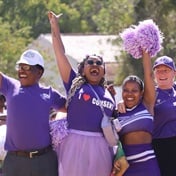One of the benefits of running, is that aside from a supportive, comfortable pair of running shoes, an absorbent pair of socks, and a sports bra for the women-folk – we don’t need other specialist gear.
The only other kit recommendations are:
- a water-resistant, long-sleeved top (more for Winter-running)
- a little pouch for your car key (alternatively ensure that your shorts/pants have an inner pocket)
- a reflector top or belt or small flashing light, essential if you are running in the dark.
- a stop-watch function on your watch, if you want to record your running time accurately
There is an amazing choice of technically designed running kit, made from light, quick-drying materials. If you really enjoy running, you might want to invest in some.
Running shoes: making the right choice
Running is a form of high impact activity and every time your foot strikes the ground, a force of three times your body weight moves up your leg. Therefore, cushioning is important and becomes even more crucial for heavier people.
Podiatrists often assess your running form and body structure to help you to select the shoe which will suit your biomechanics best. You can also ask a sports shoe consultant in the sports shop to guide you.
However, running shoes are only one part of the equation. Sometimes strengthening exercises are required if you have certain muscle weaknesses or imbalances – therefore it’s vital that one looks at the whole picture.
This is what you need to consider when shopping for running shoes:
Foot type: There are three distinct foot types that are easy to identify - the high-arched, rigid foot, the flat, hyper-mobile foot and the normal foot arch. The high arched foot is generally a rigid, stable, immobile structure that is unable to perform the most basic function of the running foot - adequate shock absorption through controlled, appropriate pronation.
Landing patterns when running: On footstrike, your foot (particularly the heel and arch of the foot), tend to roll inwards naturally. This is called pronation and it is beneficial in that it serves the function of natural shock-absorption. However, most of us aren’t born with perfect biomechanics, and many of us either over-pronate or supinate.
Overpronation is more common in runners i.e. the foot rolls inwards excessively. This results in the lower leg turning inwards, which can also throw out the alignment of the knee and hip. Overpronation increases the risk of injury substantially. Whilst mild overpronation shouldn’t be a problem, moderate to severe overpronation might need correction. Motion control or stability shoes might help; alternatively orthotics (inserts into your shoes), might be necessary. A podiatrist would be able to design appropriate orthotics for you.
Supination is where the feet don’t roll in enough, which means that these people don’t experience as much “natural” shock-absorption as others. So- a well-cushioned, neutral shoe is probably advisable. The normal foot is aligned well and has a high enough arch to absorb shock adequately.
When selecting a running shoe consider the different running shoe types
1. Motion Control Shoes: These are the most rigid, control-oriented running shoes. They are generally heavier and more durable and are worn by runners with flat, hypermobile feet.
2. Stability Shoes: These shoes offer a good blend of cushioning, medial support and durability, but are not as rigid as a motion control shoe. Runners with normal arches, but who pronate moderately, often do well in a stability shoe.
3. Neutral Cushioned Shoes: These shoes generally have the softest mid-soles and the least medial support. They are usually built to encourage foot motion.
Tips for buying running shoes
- Take a well-worn pair of shoes with you, so the wearing pattern on the sole can be looked at.
- Go shopping later in the day, when your feet are perhaps a little swollen, as they will be when running. Also, ensure you buy running shoes that are about one to one and a half sizes bigger than your day shoes, to accommodate this swelling.
- Rather don’t go shopping on a Sunday or after hours, since there is a good chance that the expert staff won’t be on duty.
- Whatever you do, don’t buy a shoe for its looks – its functionality and comfort that count!
- Ask for shoes that would last for approximately 800 – 1000km of running.
Socks
If you are prone to getting blisters, it is worth investing in socks that help to prevent these! The usual advice is to wear socks made of a synthetic fabric that won’t hold onto water i.e. thick acrylic or polyester socks rather than cotton/woolen ones – but see what works best for you!
Read more:
Do running shoes do more harm than good?




 Publications
Publications
 Partners
Partners












